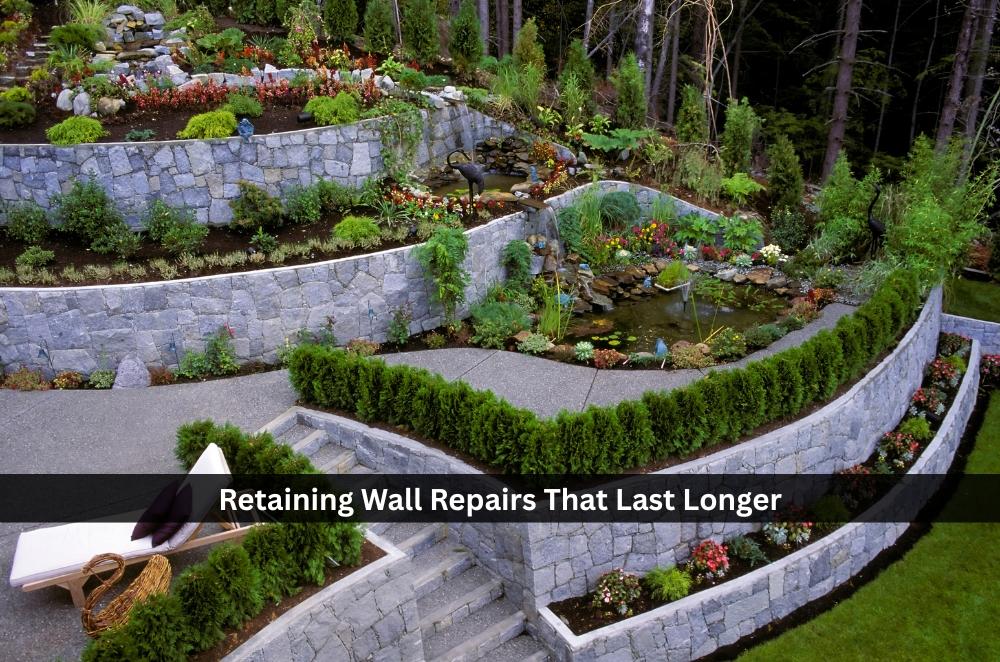Retaining Wall Repairs That Last Longer

A retaining wall tends to disappear into the background—until it doesn’t. Hairline cracks, a slight lean, the odd bulge: they’re early warnings, not quirks. Ignore them and you’re risking movement, trip hazards, and a garden that starts sliding downhill after the next big rain. Acting quickly is cheaper than rebuilding later, and safer for everyone using the space. That’s why same day retaining wall repairs matter. Fast stabilisation buys time, stops erosion from chewing out the base, and keeps water from hammering weak points. It’s a practical way to protect your paths, fences, and plantings while bigger fixes—drainage, footing, reinforcement—are properly planned without rushing the structural decisions involved later.
What causes retaining walls to fail?
Retaining walls usually fail because of water pressure, poor drainage, and inadequate footings. Soil movement and timber rot add to the strain.
Hydrostatic pressure builds when backfill lacks gravel and geotextile, weepholes clog, or a pipe is missing. Poor compaction lets the base settle, opening joints and inviting more water. Clay swells and shrinks with the seasons; sand can wash out and hollow the toe. Roots pry at joints, while heavy vehicles parked too close overload the edge. Catch those signals early, and you’ll avoid a blowout after a wild storm.
-
Clear debris from weepholes after storms
-
Use free-draining backfill and a pipe
-
Keep heavy loads set back from edges
When the early signs show, prioritise fixing failing retaining walls before minor defects snowball.
How can prompt repairs save money?
Prompt repairs save money because they stop escalation before full replacement is unavoidable. Quick stabilisation also prevents damage to paving, fences, and nearby plantings.
Resetting a short failed section, adding drainage gravel, or tying back a bowed panel is far cheaper than demolishing the lot. Early work preserves what’s sound and targets only what’s moved.
-
Repack and reset slipped blocks
-
Add scoria and perforated piping
-
Install temporary braces where needed
It also limits downtime: the garden stays usable while permanent upgrades are scheduled. Think of it as triage that protects both structure and budget
Why is professional repair worth it?
Professional repair is worth it because specialists diagnose root causes and design fixes that actually last. They match methods to soil type, materials, and site constraints.
On-site, pros assess footing depth, surcharge loads, surface runoff, and subsoil drainage. They’ll specify the right geogrid, compaction, and batter, not just a prettier face. Where heights or regulations demand it, they’ll coordinate engineering sign-off so the wall complies and insurance isn’t at risk. The result: a repair that looks tidy now and still stands straight after a wet summer and a dry winter.
Conclusion
Retaining walls are only as strong as the care they receive. Addressing cracks or shifts the moment they appear prevents disaster and saves money in the long run. From drainage fixes to reinforcement, timely action can extend the lifespan of your wall and secure your garden. And if you’re aiming to pair durability with design, considering approaches like low-maintenance garden planning helps keep outdoor spaces lush without constant upkeep. With proactive repair and smart landscaping choices, you can count on your retaining walls to support both safety and style for years to come.
- Art
- Causes
- Crafts
- Dance
- Drinks
- Film
- Fitness
- Food
- الألعاب
- Gardening
- Health
- الرئيسية
- Literature
- Music
- Networking
- أخرى
- Party
- Religion
- Shopping
- Sports
- Theater
- Wellness




